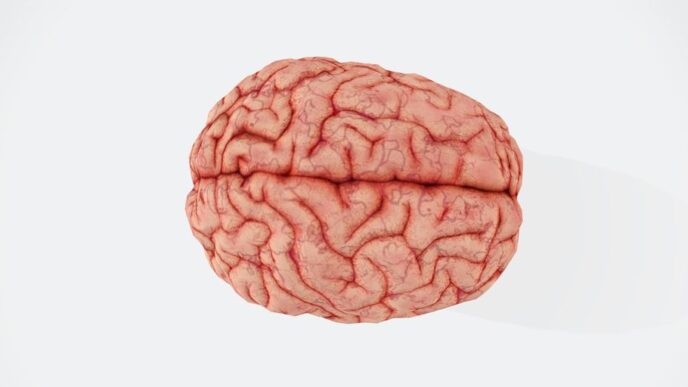Sandeep Singh’s Philosophy on Deep Learning
Deep learning is a subset of machine learning, which is essentially a neural network with three or more layers. These neural networks attempt to simulate the behavior of the human brain—allowing it to “learn” from large amounts of data. While a neural network with a single layer can make approximate predictions, additional hidden layers can help to refine and improve those predictions.
According to Sandeep Singh, the Head of Applied AI/Computer Vision at Beans.ai, deep learning drives many artificial intelligence (AI) applications and services that improve automation, performing analytical and physical tasks without human intervention. “Deep learning is the force behind innovations like voice assistants, image recognition software, and recommendation systems,” Singh explains. “The ‘deep’ in deep learning refers to the number of layers in the neural network. The more layers, the more complexity it can handle.”
As an industry expert with over 18 years of experience, Singh states that one of the primary reasons deep learning has gained traction in recent years is the availability of vast amounts of data and the parallel increase in computing power, particularly GPUs. “These advances have enabled the training of deep neural networks with numerous layers, making them more accurate than their shallower counterparts,” he states.
Singh is known as a thought leader in this space, as he has been pushing boundaries for years at multiple companies, ensuring that the technological march forward remains both ethical and transformative. Singh has a unique philosophy on deep learning, and offers insights into the realm of AI and all it compomasses.
Stepping onto the Global Stage
Singh has spoken on this and related subjects at various global platforms. One of the key addresses Singh delivered was at the Silicon Valley Ethics panel Discussion. Here, he delved deep into the intricate balance between AI advancements and ethical considerations. Another insightful session was his talk on “To Train, Fine-tune, Prompt, Engineer or Not?” during the Generative AI Hack Sessions. This session offered an exhaustive exploration of the challenges and considerations in generative AI.

Singh was awarded the title of one of the “Top 5 Generative AI Scientists” in Bangalore, India. This honor, he says, served to reaffirm his commitment and passion towards the ever-evolving field of artificial intelligence. This recognition of his past contributions was also a testament to the potential and promise of his ongoing research. For Singh, this accolade was both a validation of the countless hours he dedicated to pushing the boundaries of generative AI and a motivation to further contribute, innovate, and inspire the next generation of AI enthusiasts.
Ethics at the Forefront
In his speech at the Silicon Valley Ethics panel Discussion, Singh made a compelling argument for AI’s ethical imperative. He stated, “As we continue to embed AI into the fabric of our society, we must ensure its alignment with human values.” Singh believes that while AI has immense potential, it’s essential to navigate its growth with an ethical compass, ensuring that the technology remains a boon, rather than a bane.
The Realm of Generative AI
Generative AI has been one of Singh’s passion projects, and he has consistently been at the forefront of pioneering research in this area. During the Generative AI Hack Sessions, he asserted, “Generative AI is not just about creating but understanding. It’s about harnessing the power of AI to produce, interpret, and redefine.” Singh’s work in this field, especially the workshop he conducted on exploring generative AI with diffusion models, has opened up new avenues of understanding and application.
Deep Learning: Present and Future
From his various talks, panel discussions, and workshops, Singh’s views on deep learning emerge as both visionary and rooted in pragmatism. He often emphasizes the importance of foundational knowledge. “Deep learning,” Singh says, “is like constructing a skyscraper. Without a strong foundation, no matter how advanced your tools or materials are, it won’t stand tall.”
Addressing a workshop, he spoke about the future trajectory of deep learning, stating, “We are on the cusp of a deep learning revolution. The next decade will see major advancements culminating in a seismic shift in how deep learning integrates into everyday life.”
Drawing from his teachings, it’s clear that Singh believes in a holistic approach to deep learning, one that combines technical expertise with a profound understanding of real-world applications. This is evident in his leadership role at Beans.ai, where practical AI-driven solutions are crafted for the logistics industry.
Embracing an Agile Mindset
One of the recurrent themes in Singh’s teachings is the value of agility in the AI domain. During a conference, he mentioned, “Machine learning isn’t just a tool in the entrepreneur’s toolkit; it’s a mindset. Embracing the iterative learning process, adapting to new patterns, and making data-driven decisions symbolize the agile approach that turns great ideas into groundbreaking enterprises.”
A Multi-faceted Career
While Singh’s work at Beans.ai predominantly revolves around logistics solutions, he has also ventured into the fascinating realm of satellite imagery analysis. One of Singh’s noteworthy projects entailed developing an AI-driven model for parking detection using satellite imagery. This initiative not only aided urban planners in understanding vehicle density in particular regions but also provided critical data for transportation authorities to manage and optimize parking spaces. The model, under Singh’s guidance, demonstrated incredible accuracy in identifying parked vehicles across varied terrains and conditions. Singh’s approach integrated traditional image processing techniques with advanced neural network architectures, enabling the model to differentiate between vehicles and other similar-sized objects.
Singh has made significant contributions in clustering buildings using satellite images, a project with profound implications for urban planning and disaster management. Recognizing that manual identification and classification of buildings in satellite images could be arduous and error-prone, Singh steered the creation of an AI model that could autonomously identify, categorize, and cluster buildings based on their size, shape, and other defining features. This project proved crucial for city administrations, especially in regions prone to natural disasters, as it facilitated efficient allocation of resources, evacuation planning, and post-disaster damage assessment. For Singh, these projects were not just about the technology but also about its potential to positively impact communities and drive sustainability in urban environments.
Legacy and the Road Ahead
As a mentor in platforms like DeepLearning.AI and full stack deep learning at Berkeley, Singh has always been committed to imparting knowledge and nurturing the next generation of AI enthusiasts. His belief in democratizing AI knowledge is evident in his active contributions to open-source projects and platforms.
For many in the industry, Singh’s philosophy serves as a guiding beacon, illuminating the path forward. With AI set to be even more interwoven into the fabric of society, pioneers like Singh will be instrumental in ensuring that this integration is harmonious, ethical, and beneficial to all.
Sandeep Singh, with his rich tapestry of experiences, teachings, and beliefs, offers a unique lens through which to view the current and future state of deep learning. As we move into an era where AI’s influence will only grow, voices like Singh’s – grounded in ethics, steeped in expertise, and forward-looking in vision – will be invaluable.
Learn more: https://www.beans.ai/
Connect: https://www.linkedin.com/in/san-deeplearning-ai/
Medium: https://medium.com/@sandeepsign













